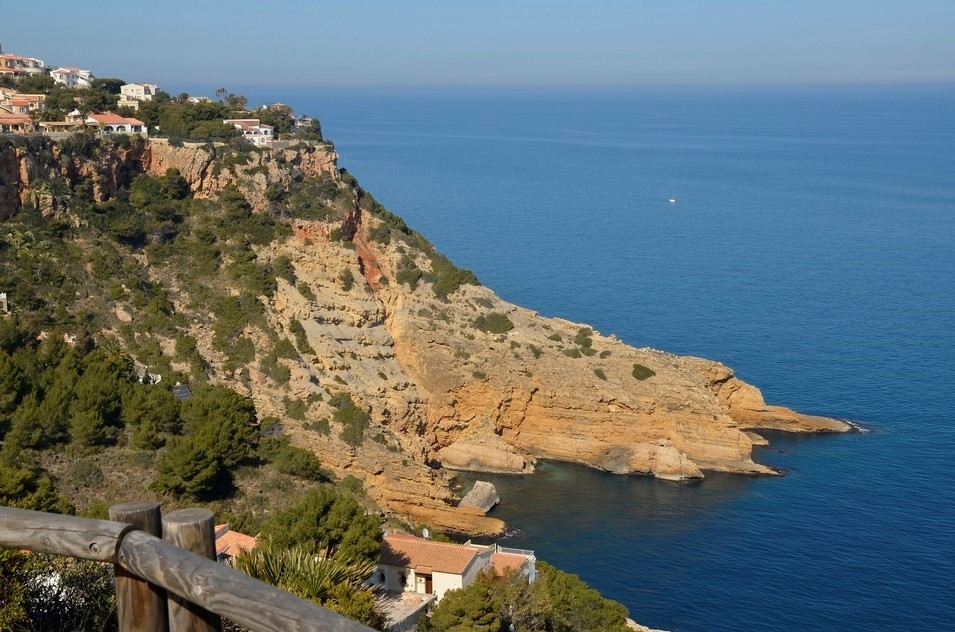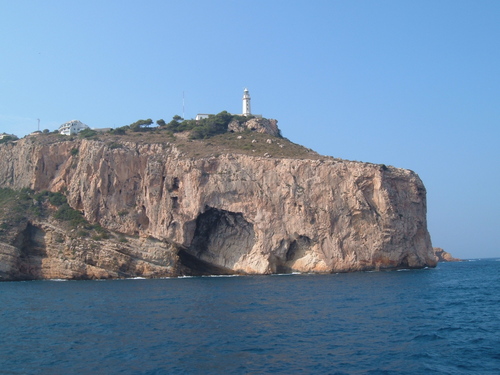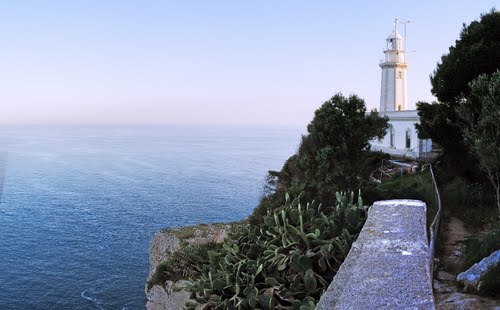Cap de la Nau (or Cabo de la Nao) literally means 'Cape of the Ship' in Spanish. It is a headland located in the southernmost point of Javea municipality.

Cabo de la Nao (Cap de la Nau) in Jávea (Xàbia) is located at the easternmost point of mainland Spain,
It offers breathtaking views of the Mediterranean Sea and surrounding coastline.

Cap de la Nau (or Cabo de la Nao) literally means 'Cape of the Ship' in Spanish. It is a headland located in the southernmost point of Javea municipality. It is rocky, steep and mostly composed of limestone. The cape marks the southern limit of the Bay of Valencia and points towards the nearby island of Formentera in the Balearic Islands, offering fantastic panoramic views. On a clear day you can even see Ibiza, which are about 90km away. Beneath the headland there is a large cave, known as Cova dels Orgues (or Cueva de los Órganos in Spanish) that can only be approached from the sea.
The beautiful white Cap de la Nau lighthouse was built in 1928 and is located 120 meters over the sea level. There are two restaurants near the lighthouse, where you can enjoy the view while having a drink and a delicious Spanish dish.

1. Panoramic Views
The cape provides sweeping vistas of the azure Mediterranean waters and, on clear days, you can see as far as Ibiza.
The cliffs, rugged coastline, and deep blue sea make it a favorite spot for photographers and nature lovers.
2. Lighthouse (Faro de Cabo de la Nao)
The white lighthouse marks the cape and guides ships navigating the coastline. While the lighthouse itself isn’t open to the public, the surrounding area offers excellent viewpoints.
3. Miradores (Viewpoints)
The area is part of Jávea’s network of Miradores, a series of viewpoints offering some of the best coastal landscapes in the region.
4. Coves and Beaches
Nearby are several picturesque coves, perfect for snorkeling, diving, or relaxing:
• Cala Granadella: A small, pebbly beach known for its crystal-clear waters.
• Cala Ambolo: A secluded cove popular with naturists.
• Cala de la Barraca (Portitxol): Known for its charming white fishermen’s houses.
5. Restaurants with a View
Enjoy a meal or drink at one of the restaurants perched on the cliffs, such as Restaurante Cabo la Nao, which boasts panoramic sea views.
6. Hiking Opportunities
Explore trails in the surrounding area, many of which connect to other viewpoints or lead down to hidden coves.
7. Marine Life and Snorkeling
The waters around Cabo de la Nao are teeming with marine life, making it a hotspot for snorkeling and diving enthusiasts.
•The waters around Cabo de la Nao are teeming with marine life, making it a hotspot for snorkeling and diving enthusiasts.